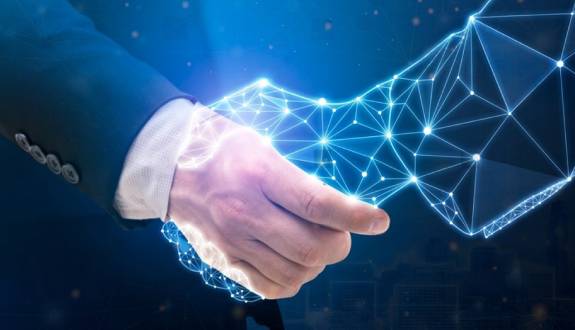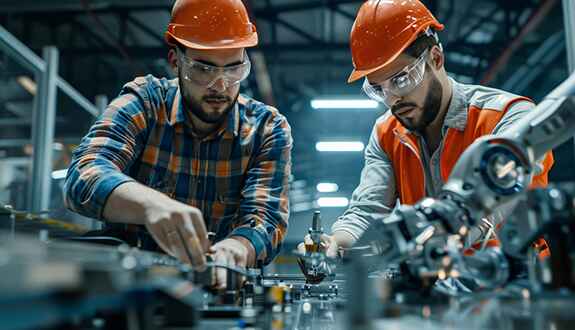How AI-Driven Battery Scrap Scanning Can Revolutionize Lithium-Ion Battery Recycling

DEC 09,2024
Lithium-ion batteries power everything from smartphones to electric vehicles. However, with their widespread use comes the challenge of efficiently recycling them to recover valuable materials like lithium, cobalt, and nickel. Traditional recycling methods are slow, hazardous, and inefficient. AI-driven battery scrap scanning is emerging as a transformative solution, bringing precision, speed, and safety to this crucial process.
The Problem with Current Recycling Processes
Recycling lithium-ion batteries involves complex sorting of multiple layers of metals, plastics, and electrolytes. Here are some key challenges:
-
Time-Consuming :
It can take up to 12-15 hours to manually sort one ton of battery scrap, depending on the variety of batteries
-
Error-Prone :
Manual sorting has an higher error rates , leading to material contamination and wastage.
-
Hazardous :
Studies show that 35% of workers in battery sorting processes report health issues such as respiratory problems, skin irritation, or exposure to hazardous chemicals.
How AI-Driven Battery Scrap Scanning Works
AI-powered systems use advanced technologies such as computer vision, machine learning, and spectroscopy to identify, classify, and sort battery scrap efficiently. The process involves :
-
Image Capture :
High-resolution cameras or sensors analyze battery scraps.
-
Data Analysis :
AI algorithms identify battery types, chemistries, and materials with pinpoint accuracy.
-
Automated Sorting :
Batteries are categorized and directed to appropriate recycling streams.
Key Benefits of AI-Driven Scanning
-
Enhanced Efficiency
AI systems can process the same tonnage of battery scrap in 2-4 hours, an 80-85% reduction in sorting time compared to manual methods. This dramatically increases throughput and allows recyclers to meet growing demands.
-
Higher Accuracy
AI-powered scanning achieves sorting accuracy rates of 95-98%, minimizing contamination and optimizing material recovery.
-
Improved Safety
Automated sorting reduces human involvement, lowering the risk of accidents and health issues. This can decrease the percentage of affected workers from 35% to less than 10%, according to industry projections.
-
Cost Savings
While initial implementation costs can be high, AI-driven systems save recyclers 20-30% in operational costs over time due to faster sorting, reduced waste, and improved material recovery rates.
-
Sustainability
Efficient recovery ensures that up to 90% of critical materials like lithium and cobalt are reclaimed, reducing dependency on mining and preserving natural resources.
AI in Action: A Hypothetical Case
Consider a recycling facility processing 10 tons of battery scrap daily :
-
Manual Sorting :
Would require 15 hours and at least 20 workers, leading to delays and potential errors.
-
AI-Driven Sorting :
Completes the same task in 3 hours with minimal human intervention, achieving nearly 98% accuracy.
This not only improves operational efficiency but also reduces annual labor costs significantly.
Challenges and Opportunities
Despite its potential, the adoption of AI in battery recycling faces challenges :
-
High Initial Investment :
Deploying AI systems can cost higher for a mid-sized facility.
-
Integration with Legacy Systems :
Existing facilities may need significant upgrades.
-
Skill Gap :
Operating AI systems requires trained personnel.
Nevertheless, with the rising global focus on sustainability and circular economy models, these challenges are increasingly seen as investments in long-term growth and environmental stewardship.
Conclusion
AI-driven battery scrap scanning is not just a technological upgrade; it’s a paradigm shift in lithium-ion battery recycling. By reducing sorting time by over 80%, improving recovery accuracy to 98%, and significantly enhancing worker safety, this innovation is setting new benchmarks for efficiency and sustainability.
As the global demand for recycled battery materials grows, adopting AI-driven solutions will be critical for recyclers to stay competitive, sustainable, and safe. The future of battery recycling is here—and it’s powered by AI
Reference by:- JACTO
More Relevant

JACTO
The Shadow Economy of Lithium-Ion Battery Scrap
Blogs
The lithium-ion battery industry is exploding. EVs, renewable energy, and consumer electronics are fueling an unprecedented demand. But beneath this rapid expansion lies a hidden truth—a thriving black market that few talk about, yet everyone in the industry knows exists.
read more
JACTO
How AI-Driven Battery Scrap Scanning Can Revolutionize Lithium-Ion Battery Recycling
Blogs
Lithium-ion batteries power everything from smartphones to electric vehicles. However, with their widespread use comes the challenge of efficiently recycling them to recover valuable materials like lithium, cobalt, and nickel.
read more
JACTO
Currents of lagging Manufacturing.
Blogs
In today's tech-driven world, lithium-ion batteries are crucial for powering our devices and advancing sustainable energy solutions
read more
JACTO
Mining: The Hidden Cost
Blogs
We live in an era of incredible innovation. Electric vehicles and renewable energy are reshaping our world, powered by lithium-ion batteries. But there's a challenge we need to face head-on: mining.
read more
JACTO
Cobalt powered World : Volatility and Supply Concentration
Blogs
The cobalt market faces substantial threats due to its high concentration in production and refining, particularly in politically unstable regions and major refining hubs, which also impacts its monetary values.
read more
JACTO
Why India Needs a Lithium-Ion Battery Recycling Industrial Union?
Blogs
The rise of electric vehicles (EVs), renewable energy storage, and portable electronics has fueled a surge in lithium-ion battery (LIB) usage in India. This growing demand brings with it a parallel challenge: managing the massive volumes of spent batteries.
read more
